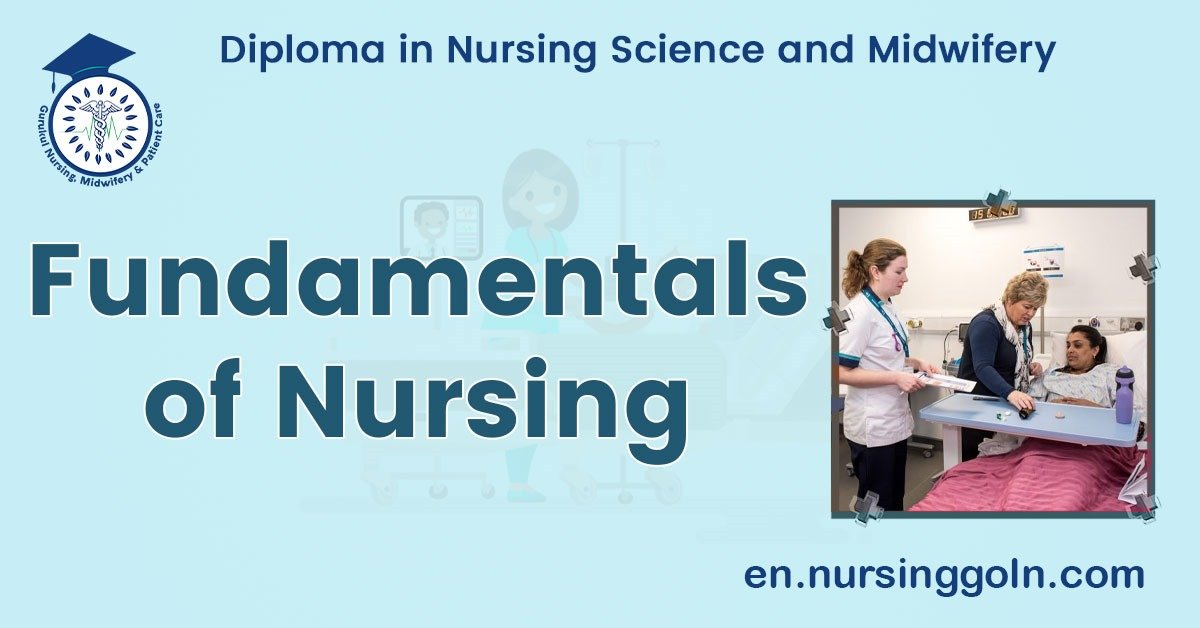the aim of the course is to provide competencies to the students regarding Fundamentals of Nursing.
Fundamentals of Nursing
The course has included basic concepts of nursing and nursing, the unique functions of a nurse, nursing history, nursing ethics, the BNMC code of conduct, and nurses’ roles and responsibilities. Communication in Nursing: assertive communication, barriers to effective communication, interpersonal and therapeutic relationships, key elements in building relationships, communicating with other health care professionals;
concepts, principles, and practice of first aid and wound care including nursing techniques and procedures, recording and reporting, basic need for nutrition and hydration and elimination for critically ill patients, administering oxygen, medication, and blood products. Health assessment; sources of data and assessment strategies, diagnostic tests, and investigations.

CHAPTER -1: Basic Concepts of Nursing and Nurse.
- History of Nursing Profession
- Nursing
- Nurse
- Nursing Action & Nursing Standard.
- Nursing Ethics
- Bangladesh Nursing and Midwifery Council (BNMC)/BNMC Code of Ethics
- Legal issues in nursing and law
- Florence Nightingale
CHAPTER -2: Basic Concepts Relevant to Nursing: Person, Environment and Health.
- Person
- Basic human needs & Human Right
- Environment
- Health.
- Interrelationship among the Concepts of Person, Health, Environment & Nursing
CHAPTER-3:
Historical Development of the Nursing Profession in Bangladesh
CHAPTER -4:
Nurses’ Roles and Competencies Required in Promoting, Maintaining, and Restoring Health.
CHAPTER-5: Vital Signs
Sterile Technique And Infection Control

CHAPTER -6: Personal Hygiene and Comfort.
Miscellaneous
CHAPTER -7: Bed Making
CHAPTER-8: Activity and Exercise
- Patients’ positioning
- Patient lifting and transferring
- Assisting with passive range of motion and exercises
- ADMISSION OF PATIENT IN HOSPITAL
CHAPTER-9: Oxygenation
CHAPTER-10: Nutrition/ Hydration.
CHAPTER-11: Wound

CHAPTER-12: Urinary Elimination
CHAPTER-13: Bowel Elimination
CHAPTER-14: Medications
- Routes of Drug Administration
- Oral Route
- Intravenous Injection
- Infusion
- Vein Puncture
- Intramuscular Injection
- Blood Transfusion
CHAPTER-15: Specimen Collection
CHAPTER-16: Hospital Admission and Discharge
CHAPTER-17: Communication in Nursing
- Introduction to Communication in Nursing
- Effective Communication & Interpersonal Communication
- Assertive & Responsible Communication
- Therapeutic communication
- Key elements in building interpersonal and therapeutic relationships
- Therapeutic relationship
- Bridges to the Relationship
- Barriers to the development of interpersonal relationship
- Delegation
- Supervision & advocacy
- Conflict Resolution
CHAPTER-18: Introduction to Health Assessment
- Data
- Data collection
- Gordon’s Functional Health Patterns
- OLD CARTS
- History Taking
- Physical Assessment/Head-to-Toe Physical Assessment
- Inspection
- Palpation
- Percussion
- Auscultation
- Nurse’s Roles for Preparing a Patient for Physical Assessment
- Diagnostic tests and investigations
- Identifying client’s needs / expectations / responses to actual or potential health problems
- Nursing Process
- Nursing records/ documentation

CHAPTER-19: General Examination
CHAPTER-20: First Aid
CHAPTER-21: Life Threatening Conditions With First Aid Management
- Shock
- Unconsciousness
- Bleeding/ Hemorrhage Or Haemorrhage
- Poisoning
- Burn
- Fracture
- Dislocation
- Sprain
- Snake bite
- Dog bite
- Insect bites
- Drowning

CHAPTER-22: Bandaging
CHAPTER-23: Sterilization
CHAPTER-24: Miscellaneous
- Nursing Care Delivery within Health Care System.
- Quality of Nursing
- Holistic Nursing care
- Health care delivery system
- Diagnostic test & investigation

CHAPTER -26: Practical/OSPE Of Fundamentals Of Nursing
Read More….
